Some mothers battle with the uncertainty of not knowing how much breast milk their baby is actually getting and many wonder whether mixed feeding is necessary.
But has my baby had enough?
One of the big differences between breastfed and formula fed babies is that it’s clear how much milk volume a bottle fed baby has had. It’s just a simple matter of reading the measurements on the side of the bottle. Working out how much a breastfed baby has had requires a few more observation skills.
Have you finished?
Breastfed babies tend to control the amount of milk they have with each feed, whereas bottle fed babies generally have their feeding volumes controlled by the person holding their bottle. Although it’s possible, it’s much harder for a breastfed baby to overfeed than one who is bottle feeding.
Breast milk changes all the time in both volume and fat content, to suit the growing baby’s needs. No two breastfeeds are exactly the same. And just like us, a baby’s hunger varies and sometimes they need more in their stomach to feel satisfied.
How can I tell if my breasts are making enough milk?
Just remember, not every mother will have the same breastfeeding experience. Every mother and her baby are unique.
- Your breasts feel full before you breastfeed. And after your baby has fed, your breasts feel more comfortable.
- Your breasts look fuller and larger than they usually do.
- Your breasts may leak milk between feeds.
- You may have a “let down” of milk between breastfeeds.
- Your bra feels firmer when your baby is due to be fed.
- You feel your baby’s sucking action changing when your milk starts to flow and you’ve “let-down”. This changes from a quicker repetitive suck, suck pattern to a suck, swallow, suck, swallow.
How can I tell if my baby is getting enough breast milk?
- They look healthy and thriving.
- They respond to you and other people.
- They have good skin colour and muscle tone.
- Their skin doesn’t look too big for their body.
- They are reaching their developmental milestones.
- They feel heavier in your arms.
- The straps on their pram and car seat need to be adjusted because your baby is getting larger.
- People comment on your baby’s growth and how much they’re changing.
- They are generally settled and sleep between most breastfeeds.
- Your baby is generally content and happy in-between and after breastfeeds.
- Their eyes and mouth are moist.
- They are growing out of their clothes and smaller size nappies. You need to dress them in bigger sizes.
- They are wetting at least six (or more) nappies every day. Their urine is pale, almost odourless and they are passing good volumes.
- Their poos are soft and yellow. Remember though, breastfed babies may not poo everyday and there can be days between.
- They are gaining weight and increasing or tracking along their percentile (growth) charts.
- You have a sense that your baby is doing well and that how you’re caring for them is just fine.
What if I have to offer formula as well?
Sometimes a mother is advised by a health professional to offer her baby formula.
There can be many reasons why:
- Baby not gaining enough weight.
- Baby failing to thrive.
- Mother needing to take medications which are contraindicated in breastfeeding.
- Mother or baby needing to have surgery and continuing breastfeeding isn’t possible.
- Periods of physical separation from each other.
- Maternal illness where breastfeeding is not recommended.
- Other individual reasons.
It’s worth knowing
Mixed feeding or needing to offer formula as well does not necessarily mean the end of breastfeeding. Research has proven that any amount of breast milk is protective for babies. Even partial breastfeeding brings benefits to a mother and her baby.
Speak with your healthcare professional about ways to increase your breast milk supply. Specific medication is available on prescription which can boost supply.
A baby’s unsettled behaviour is not always about their feeding. Over-tiredness, boredom, a wet or dirty nappy or just needing to feel reassured can all cause a baby to cry. Check with your child health nurse or healthcare practitioner if you’re unsure what your baby is trying to tell you.
The risk with mixed feeding and offering formula in addition to breastfeeding is:
- That the baby will fill up on formula and not want to breastfeed as frequently or for as long. This can affect a mother’s milk supply.
- Formula can cause a breastfed baby to become constipated. They can start straining when pooing and their poos have a firmer consistency.
- Formula can cause a breastfed baby to vomit. This is because it’s harder to digest than breast milk.
- The baby may start to refuse breastfeeds because they learn it’s easier to suck from a bottle teat than a nipple.
- In the early days of breastfeeding, a baby can develop “nipple confusion” if a bottle teat is offered as well as the breast. This can interrupt, for some babies, the skills required for breastfeeding.
- It can become tempting for parents to rely on bottle measurements for reassurance that their baby has fed well. Rather than looking at the baby’s behaviour, the amount of milk left in a feeding bottle becomes the deciding factor on whether their baby has had a “good feed”.
For more information check with:
- Your child health nurse.
- Your healthcare practitioner.
- A lactation consultant.
About the Author:
Jane Barry has qualifications in general, paediatric, immunisation, midwifery and child health nursing. She holds a Bachelor Degree in Applied Science (Nursing) and has almost 30 years specialist experience in child health nursing. She is a member of a number of professionally affiliated organisations including AHPRA, The Australasian Medical Writer’s Association, Health Writer Hub and Australian College of Children and Young People’s Nurses.
Our Products
-
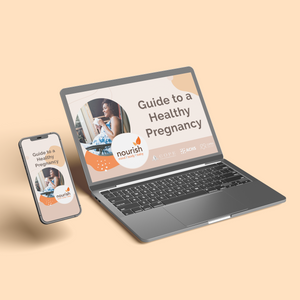
01. Guide to a Healthy Pregnancy
$55 -
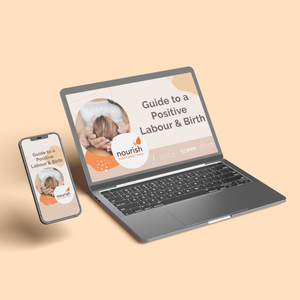
02. Positive Birthing Course
$55 -
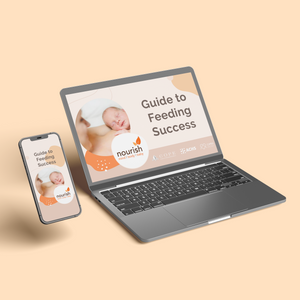
03. Infant Feeding Guide
$55 -
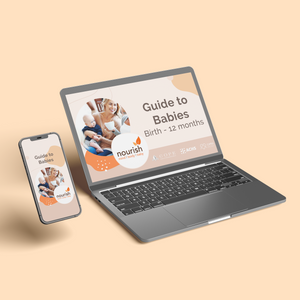
04. Baby Sleep Guide - First 12 Months
$55 -
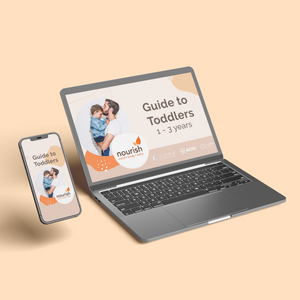
05. Toddler Parenting Course 1 - 3 Years
$55
-
 When to Start Antenatal Classes?
When to Start Antenatal Classes?
Becoming a parent is an incredible milestone, but it comes with a host of changes that can be daunting, especially for first time parents. Antenatal classes are all about offering expectant parents the education they need to make informed decisions, look after their bodies and care for their newborn babies. While you probably already have a long list of things you need to accomplish during your pregnancy, it’s a good idea to make time to attend antenatal classes.
-
 Development Milestones 4-8 Months
Development Milestones 4-8 Months
As they reach the middle of their first year, you'll start to see bigger leaps in their growth and ability!
In this article, we’re going to discuss your baby’s developmental milestones between 4-8 months, and what you can expect along the way.





 When to Start Antenatal Classes?
When to Start Antenatal Classes?
 Development Milestones 4-8 Months
Development Milestones 4-8 Months








